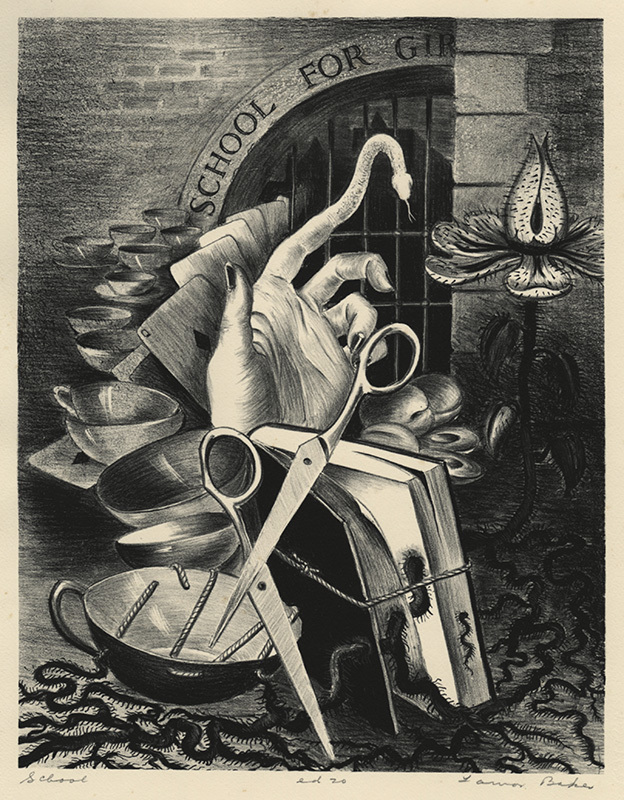
19th, 20th & 21st Century Fine Prints
707-546-7352 · fax 707-546-7924 · web: www.annexgalleries.com · email: artannex@aol.com
School - from the "Fantasies" series by Lamar G. Baker

School - from the "Fantasies" series
Lamar G. Baker
School - from the "Fantasies" series
Lamar G. Baker
1908 - 1994 (biography)From the series "Fantasies", a collection of images based that are commentary on sociopolitical subjects. Titles also included "African Fantasy," "Commuter's Fantasy," and "Mars". Here, a hand breaches the hallowed ground of a forbidding stone structure, the gated wall to a school for girls; surrounding the hand, which begins to form the sinewy body of a snake, is an endless marching line of teacups and bridge cards, while the dark ground writhes with living, spiked vines that bind to everything that touches them. Baker did not shrink from exploring difficult and often controversial ideas, using art as a platform to critique the hypocrisy of social norms and prejudices. While his work often falls into the Surrealist catgory it was often less veiled than many of his contemporaries.
Lamar Baker was born in 1908 in Atlanta, Georgia. He studied at Columbus' High Institute of Art and at the University of Georgia under Ben Shute, and at the Castle Studio, also in Georgia. In 1935 he moved to New York to attend the Art Students League, where he studied printmaking under Kenneth Hayes Miller, Rico Le Brun, and Harry Sternberg. Sternberg's social realist style was of great influence to Baker, as was the work of Thomas Hart Benton, Louis Lozowick, and John McCrady.
During this time he created several lithographic series dealing with a range of sociopolitical issues, his most well-known of which was the Cotton Series, which examined not only with the inherent racism of the industry, but the back-door politics and anti-union sentiments that affected black, white, male and female workers alike.
